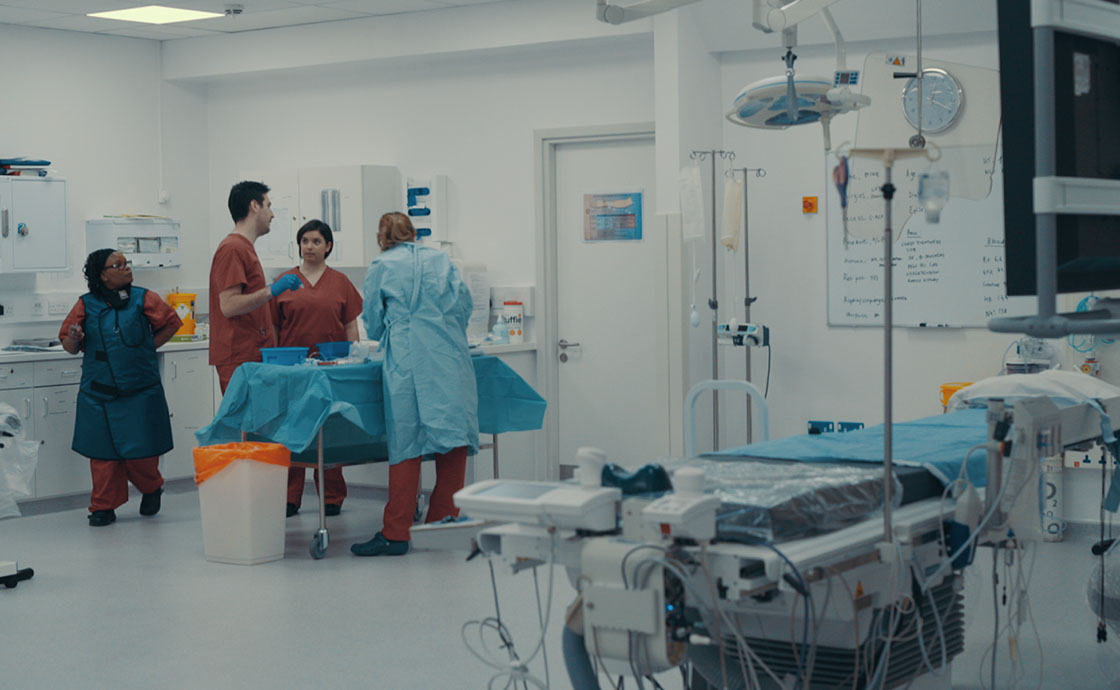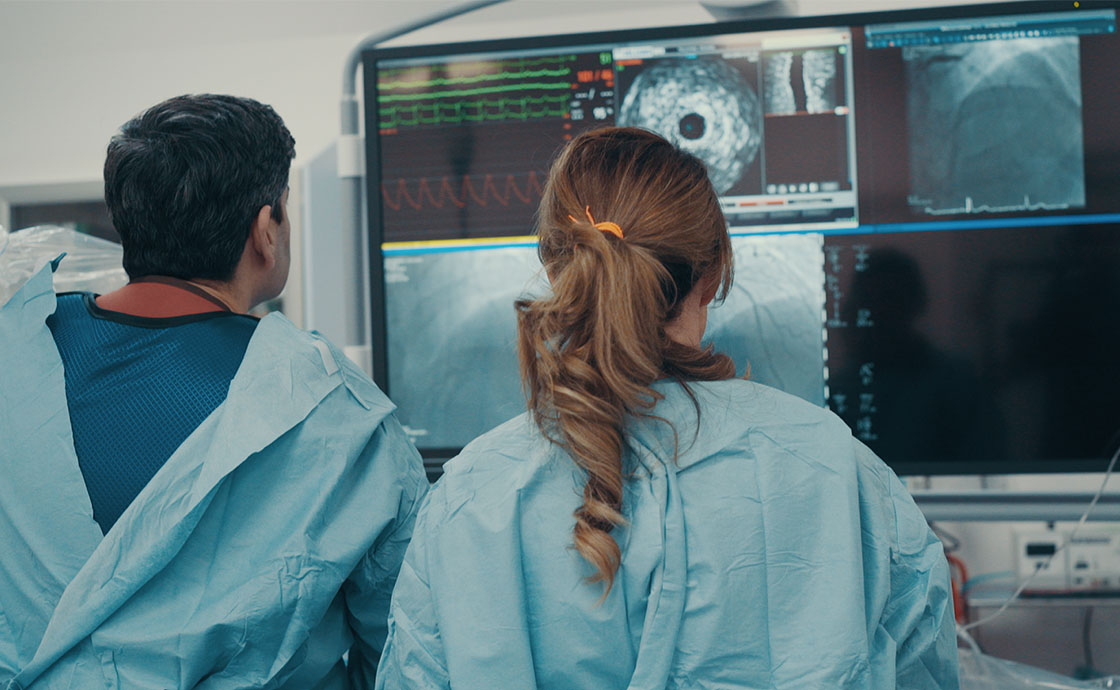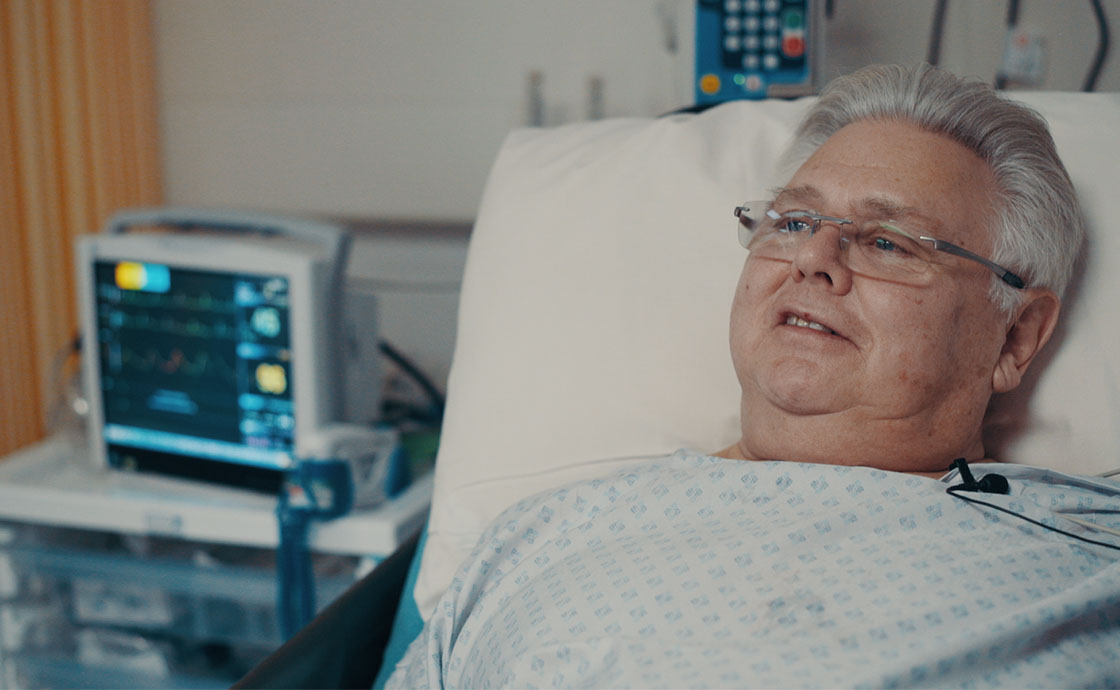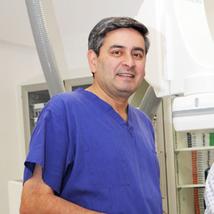Mike’s angiogram: A journey inside the heart
- Overview
Your health is only as good as the health of your heart. Diet, lifestyle, age and hereditary factors can all make an impact on its performance and your quality of life. Angina – a common problem brought on by fatty deposits that narrow the coronary arteries that carry blood back to the heart – can put a stop to the things you love most in life.
Angina
The symptoms of angina are very similar to that of a heart attack – tightness in the chest and shortness of breath upon exertion. In fact, a heart attack is exactly what you experience when one of these blockages happens suddenly.
That’s why it’s very important that we take steps to diagnose and treat angina. To do that we need a detailed picture of your heart.
The Catheter Lab



Catheter Labs are specialised environments where diagnostics and surgery come together. Equipped with an x-ray, ultrasound, movable operation table and a large monitor screen - cardiac procedures like an angiogram or angioplasty can be carried out.
A patient comes into the Lab conscious and with just a local anaesthetic applied. Using x-rays for guidance, a thin tube is fed through a catheter and into an artery in the patient’s arm or groin. The tube is pushed through the artery until it reaches the heart. A dye is released into the blood to help the x-ray show any abnormalities.
An intervention inside the heart
The dye rushes along with the blood each time the heart pumps. I look closely at the image on the monitor to find any narrowing. If we find one – and the patient has agreed to it – we’ll proceed with inserting stents in a procedure called angioplasty. Stents can be fed along the tube like a monorail system, deploying them to the exact spot that needs widening. The stents expand and allow blood to flow more freely, immediately relieving the symptoms of angina. It’s pure plumbing.
Mike’s prognosis

This is not the first time I’ve performed an angiogram on Mike. Last time we did find narrowings and proceeded to perform angioplasty. His symptoms disappeared and he was able to go back to the badminton court and enjoy the things he likes to do.
When his symptoms returned, I recommended a repeat angiogram – to check that none of the stents had collapsed (a rare problem) or that fatty deposits had not built up elsewhere and caused a narrowing.
But we found no narrowing and Mike’s stents were exactly how I had left them. So why have his symptoms returned? We can’t say until Mike has further tests, but one thing I can say for sure is that blood is flowing through his coronary arteries just like it should.
I’ve referred Mike for further diagnostic tests, namely a CT scan of his lungs and an echocardiogram. The results will help us to better understand what is causing his angina-like symptoms.
Last updated Wednesday 27 November 2019
First published on Friday 5 February 2016


